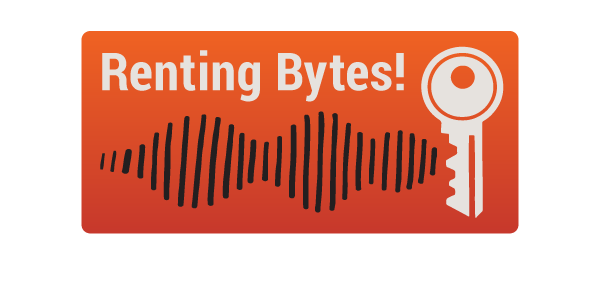The true cost of eviction
Jemima Mowbray • 22/02/2022
Moving is expensive, it all adds up.
We all know the pain of moving - the stress, anxiety, and high costs involved. Lots of us hold off from moving even when we want to because it just seems way too expensive.[1] Now put yourself in renters’ shoes. We move more often than our owner-occupier neighbours. Over 80% of private renters have moved in the last 5 years; a third have moved between 2 - 3 times; and 10% have moved 5 times or more.
For many of us the move is not our choice. Up to 30% of all renters' moves are involuntary (i.e. a forced move, mostly as a result of eviction).[2]
Our recent special report, Eviction, Hardship and the Housing Crisis, looks closely at the immediate and direct costs of moving. The financial costs involved with eviction can include things like hiring removalists or a moving van, packing materials, cleaning costs, taking time off work, travelling to property inspections, school relocation costs, mail redirection, utility disconnection and reconnection, and replacing furniture or appliances. Analysing these various costs – and weighting these according to household type and location (Greater Sydney vs Regional NSW) - the report estimates the average costs for moving house are around $4,000 for renting households. Our estimates don’t include the rental bond a household will often need up front to secure a new tenancy.
Renting households in NSW face basic costs of $2,520 when they move, and generally are more likely to face costs of around $4,075 to move.
The ‘core cost’ of a move for renting households in NSW ranges from $2,015 for a single person household in Greater Sydney through to $3245 for a family household in Regional NSW
The ‘average cost’ of a move for renting households in NSW ranges from $3,215 for a single person household in Greater Sydney through to $5,400 for a family household in Regional NSW
Landlords also face a number of costs when evicting a renter, including a reletting and advertising fee. We estimate costs for the landlord at between $1,100 - 1,400.
The financial costs, and the stress and anxiety associated with moving are substantial, and these are only exacerbated when a household is forced to move (evicted). Of course, the costs of eviction and the impact it has on renters’ lives - as well as the costs for governments and communities – are much broader. And longer lasting.
Eviction compounds disadvantage
Eviction is a driver of poverty over the medium to longer term. Eviction is associated with long term impacts on employment, health and education outcomes, and an increased demand on health and housing services. When a household has to move out of area – an increasingly common scenario with affordability and availability of properties limiting options in the local area – they can often lose their established social networks and support and their sense of belonging within the community.
When a household is evicted into homelessness costs are significantly higher again. Eviction has serious impacts on the physical and mental health of people forced into homelessness. They are more likely to experience under and unemployment, face violence and discrimination, and are at increased risk of contact with the criminal justice system. AHURI research estimates the additional costs for Australian governments of supporting an individual experiencing homelessness are around $29,450 each year.[3]
An emerging evictions crisis?
We often talk about our housing system as in crisis. There seems to be general agreement we are experiencing a ‘housing crisis’ in relation to affordability. More recently though Chris Martin, research fellow at City Futures Research Centre – USNW, has made the case that Australia, prior to Covid-19, was already experiencing an incipient ‘eviction crisis’.[4] There is limited quantitative data available on evictions in Australia, and limitations on the data available that in many ways underplays the frequency of eviction. Nevertheless, Martin identifies that eviction applications are occurring in both NSW and Victorian Tribunals at a rate just over half that reported for the United States, where the existence of a state of crisis in relation to eviction is generally accepted.
While the Australian public conversation about housing often considers and debates solutions for the affordability crisis in housing, not as much attention is paid to the possibility of an emerging eviction crisis.
Leo Patterson Ross, CEO, Tenants' Union of NSW
What can we do?
Given the high costs associated with eviction overall, in terms of immediate, direct costs but also the longer-term harm and substantial financial costs to the household, governments and the broader community – how can we better discourage the use of eviction, except where absolutely necessary? Where eviction is necessary, how can we better minimise or mitigate impacts and more equitably distribute the associated costs?
Eviction, Hardship and the Housing Crisis proposes three ways in which tenancy law could be changed.
- In current NSW tenancy law ‘no grounds’ eviction provisions should be replaced with a range of specified reasonable grounds for ending a tenancy.
If the Residential Tenancies Act 2010 was amended to provide an expanded list of community accepted ‘reasonable grounds’ for ending a tenancy this would allow landlords to be more transparent about their reasons for ending a tenancy. Where a dispute arose about the eviction, for example where a renter held concerns the eviction was retaliatory or otherwise unjustified, the landlord would be required to provide evidence to the Tribunal to demonstrate the reason provided for eviction was genuine.
- The landlord should be required to cover basic moving costs for the household where a renting household is evicted for reasons other than breach (for ‘no fault’ evictions).
Requiring landlords to pay the relocation costs for an eviction where there was no breach by the renter would act as a clear disincentive against unnecessary – frivolous or potentially retaliatory or discriminatory – evictions. To ensure this provision does not cause hardship for either party, where the landlord can demonstrate they will face significant hardship in paying relocation costs, the landlord should have access to a hardship relief fund to help them meet their legal obligations.
- Fees for applications for eviction at the NSW Civil and Administrative Tribunal should be set higher.
A higher fee for applications for eviction compared to other matters, would better reflect the seriousness of and costs involved in eviction proceedings. Increasing the fee charged specifically for applications for eviction matters would put a clearer disincentive on unnecessary applications for eviction, and help ensure dispute resolution is prioritised.
Discourage eviction and distribute its costs fairly
Eviction is incredibly costly. Not just to the renting household, but also to agents, landlords, communities and governments - especially when you consider all of the longer-term costs associated with eviction.
Our current renting system relies too heavily on eviction. We've become complacent about the costs associated with it – intervening after the fact, rather than looking to see what a better model or approach might look like. If you consider housing to be essential – and we do – then it makes sense to build in better disincentives against the unnecessary and disproportionate use of eviction. The proposals outlined above (and in greater detail within our report) are aimed at reducing, and better distributing the costs associated with eviction. Ensuring people are not forced to move from their home unnecessarily, would mean improved outcomes for renting households but would also have significant benefits for the NSW economy, and a significantly reduced overall government spend.
Reducing unnecessary moves means people get to stay longer in their rented homes, to build their lives and make their home in a community, to belong and give back to that community.
For more detail on our proposals regarding the need to build in stronger disincentives against eviction, read our short policy briefing or download the full report: Eviction, Hardship and the Housing Crisis.
[1] Australian Bureau of Statistics (2015), Housing Mobility and Conditions, 2013-14, cat no 41300DO004. Around 10% of people who wanted to move in the next 12 months reported they would be unlikely to move; 25% cited the expenses involved for a move as the primary reason for holding off from moving.
[2] Available data on evictions includes Fair Trading (2020) Pilot Bond Exit Survey – Collected data, fairtrading.nsw.gov.au/housing-and-property/pilot-bond-exit-survey, accessed 22 February 2022; Choice, National Shelter, National Association of Tenants’ Organisations (2016) Unsettled survey data; Australian Bureau of Statistics (2015). Data from the Unsettled survey indicates around 24% of renter’s last move was initiated by the landlord; ABS data from 2013 – 2014 suggests around 15% (consistent with earlier 2007 – 2008 mobility data), though when this data is filtered for private renters who had been private renters before their most recent move, i.e. renters who had not switched between tenures - this increased to around 19% of moves having been initiated by the landlord. Recent data from the NSW pilot bond exit survey suggests somewhere between 17 -20% tenancies were ended by the landlord initiating termination during the period of the pilot. Based on their survey of 3182 private renters across Australia, Rowley and James found 31% of renters' most recent moves were involuntary, see Rowley, S. and James, A. 2018, The Private Rental Sector in Australia: Public Perceptions of Quality and Affordability, Bankwest Curtin Economics Centre.
[3] Kaylene Zaretsky et al (2013) The cost of homelessness and the net benefit of homelessness programs: a national study - Findings from the Baseline Client Survey, p.4
[4] Chris Martin (2021) ‘Australia’s incipient eviction crisis: No going back’, Alternative Law Journal, Volume 46; Issue 2




